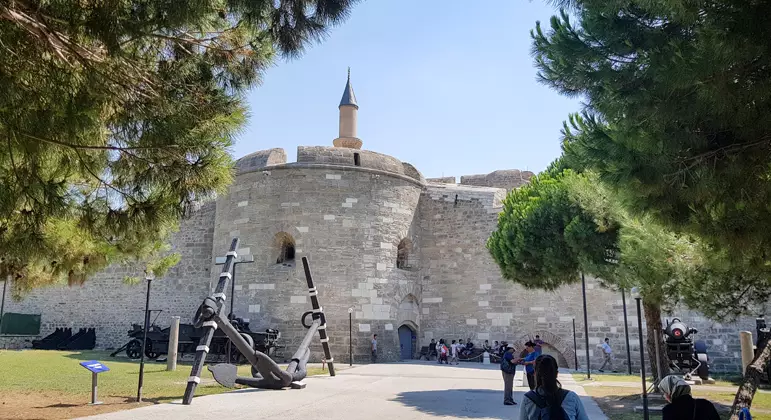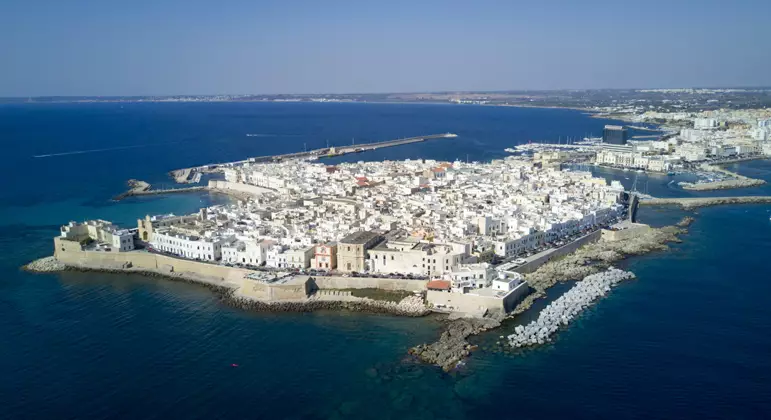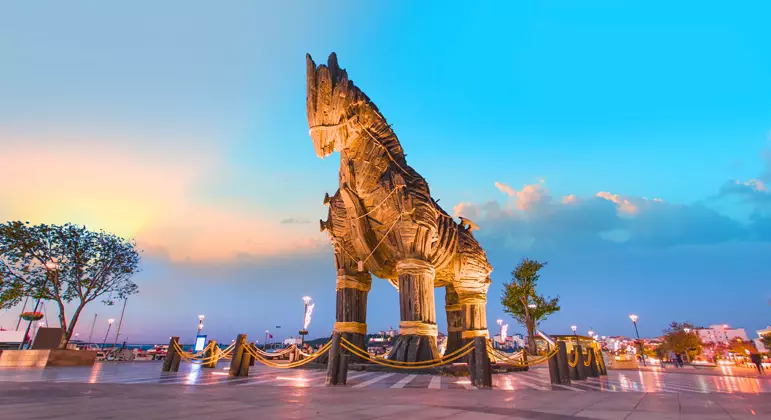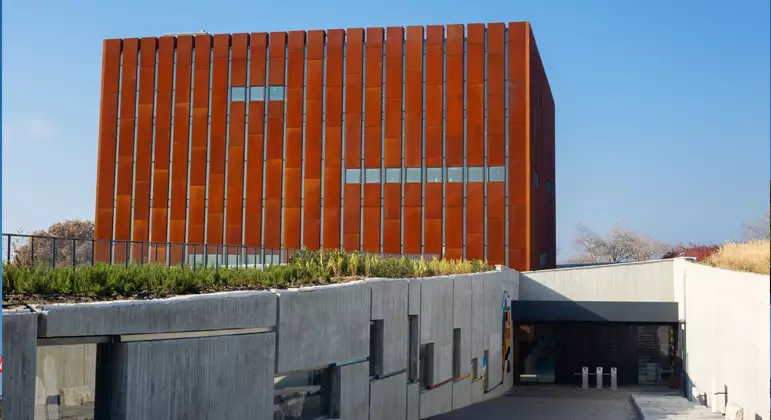Centuries later the western side of the Dardanelles would prove to be decisive for modern military history: Gallipoli. The First World War Battle of Gallipoli began with a failed Allied naval attempt to attack the Ottoman Turkish forts in the Dardanelles in February 1915 and after several months of grueling trench warfare ended in January 1916, at which point there were approximately 250,000 casualties on both sides. While the Entente Powers’ defeat at Gallipoli and failure to break the deadlock on the Western Front spelled Ottoman victory, the scope and scale of the warfare waged here was roundly transformative, not least for which the Ottoman army whose commander at Gallipoli would go on to become the first President of Turkey: Mustafa Kemal Atatürk.
Jan Morris, the great Welsh historian, wrote that “Everything about Gallipoli conspired to haunt men with this sense of tragic nobility. The peninsula itself was haunted, not by ghosts but by their absence. It was an arid, empty place…its hills, from whose summits one could see the straits on one side, the Aegean on the other, were covered with scented scrub, and it lay there sparse and aromatic, a long pile of land above the sea with gulleys and ravines. In summer it could be beautiful, the silent strait below; the deep blue of the Aegean humped with its islands…within sight across the water was the mount of Troy, with all its bright and high-flown memories. Below were the Dardanelles, through whose channel down the centuries had passed so many warriors, kings and pilgrims.”
A visit to the Gallipoli (Gelibolu) Peninsula Historical National Park is not something you’re likely to forget. At its heart is the Çanakkale Martyrs’ Memorial at the southern end of the peninsula. Rising 137 feet, the memorial is dedicated to the Turkish soldiers who died or were injured in battle. The tombs of 59,408 identified Turkish soldiers stand nearby. Anzac Cove is where on April 25, 1915, some 4,000 Australian and New Zealand soldiers landed (Anzac is an acronym for Australian and New Zealand Army Corps) in just two hours. Anzac soldiers who fell in the Battle of Lone Pine are memorialized at Lone Pine Cemetery. More famous sites: you can visit Plugge’s Plateau, where you can still see the trench lines by the path, then Beach Cemetery, Hell Spit, Shrapnel Valley, Brighton Beach and Quinn’s Post. The 57th Infantry Regiment Memorial is a prominent Turkish war memorial, while Chungb Bair Memorial, built-in 1925, commemorates New Zealand’s soldiers who brought the Allied powers a fleeting success here in August 1915.








